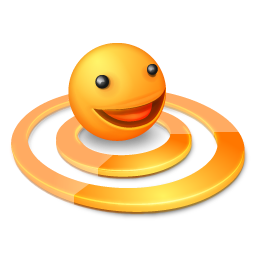 Tucnak is a VHF contest logbook. Tucnak is executable on Linux operating system and also for other UNIX like operating systems.
Tucnak is a VHF contest logbook. Tucnak is executable on Linux operating system and also for other UNIX like operating systems. The source of inspiration for Tucnak was the DOS program TACLog (Author: Bo, OZ2M) as Lada, OK1ZIA freely admits. In the late 1990s TACLog was in regular use by over 200 stations, many continuing with the same logger today.
It is becoming increasingly difficult to run a full-service TACLog, with CQ-caller, CW keyer and auto PTT as it must run directly on MS-DOS and requires a 'real' Soundblaster card.
In this section I hope to provide useful information for those contemplating changing from TACLog to Tucnak and I would like to encourage everyone to add their knowledge and experience here to help and assist others coming after.
Can be run uder MS Windows with Cygwin library too (older version). You can download Tucnak from http://tucnak.nagano.cz.
If you register user of BBS OK0NAG you can read the actual version of this dokument by typing command www tucnak.nagano.cz/tucnak1en.html.
Screenshots.
Main window

Graphics polar map

Download.
Please download Tucnak here http://tucnak.nagano.cz/download.php#ver1.The most important feature.
- The Control of program was took from program Taclog.
- The support of most EU contests. It's possible to have open more contest logs than one in one time.
- The export of contest logs to EDI format and generating of contest report (OK VHF activity contest format).
- You can work on more bands on several computers. Then you have information about QSOs from all bands on all computers. You can open log from one band on several computers (used for the second operating station)
- Is possible to run more than one process of Tucnak on one computer.
- All the written items of QSO (or part of QSO) are written also to the swap file. If your computer crashs you can read QSO data from this swap file with simple ASCII editor, e.g. Vim).
- For CW and SSB keying is possible to use program cwdaemon. Is also possible to transmit CW directly by typing from keyboard.
- The Automatic saving data to disk and diskette.
- The Database of couple Callsign and World Wide Locator.
- The Database of DXCC, valid locators for DXCC, locators with high activity from DXCC or middle locators of DXCC. It uses files cty.dat from K1EA and tucnakdw.
- Single items (Callsign, WWL, report, etc.) are automaticaly identified and inserted.
- The searching of typing string (Callsign, WWL) in actual log, in logs from other bands and in the C_W database of couple Callsign/WWL. It runs on background.
- The cross control couple callsign - locator.
- The talking with other running Tucnaks similary as in WW-Convers (talk window).
- The sending of skeds to other (higher) bands.
- The saving NC QSO and the marking of it.
- The executing shell in one of tucnak window. You can simple connect it to packet radio by programs for example Node, Call or Telnet.
- The DX spot handling from shell windows and putting it to the bandmap
- The Wizard for creating a new contest. It automatically sets parameters of a selected contest
- It is possible to work with the most kinds of terminals.
- It is possible to work remotelly by using ssh or telnet (as putty).
- The basic statistics - number of worked DXCC and WWL, simple text mode map of squares.
- There is a color world map with worked QSO in graphic mode.
- The support of many languages if somebody translates it from English or Czech :)
- Tucnak is a free software distributed under the GNU General Public License.
Installation from source code.
Installation from source code is universal way how to install program. There must be installed developments tools for C language on your PC.Extracting source code
tar xzf tucnak1-1.13.tar.gz
Changing directory:
cd tucnak1-1.13
Run configure:
./configure
Compile code by command:
make
And install tucnak as root:
make install
Program is normally installed into directory /usr/local/bin. Maybe you will add path to Tucnak binary. You can add line export HOME=/usr/local/bin:$HOME to end of file /etc/rc.local in bash shell and then restart rc.local (or restart system).Changing directory:
cd tucnak1-1.13
Run configure:
./configure
Compile code by command:
make
And install tucnak as root:
make install
Configuration files are allways saved in /etc directory.
Install on Debian.
Repository
Simplest way is to add linesdeb http://ok1zia.nagano.cz/debian/ok1zia binary-i386/
deb-src http://ok1zia.nagano.cz/debian/ok1zia source/
to your /etc/apt/sources.list . After it use
apt-get update
and install selected packages:apt-get install tucnak1
Download manually and install
Download package tucnak1-1.13*_i386.deb. Install it by command:dpkg --install tucnak1-1.13*_i386.deb
Download sources and create package
If binary package doesn't present, create them by extracting source code by commnad:./configure
make deb
make deb
If you liked this article, subscribe to the feed by clicking the image below to keep informed about new contents of the blog:





0 commenti:
Post a Comment